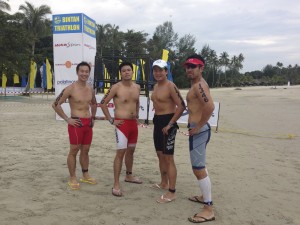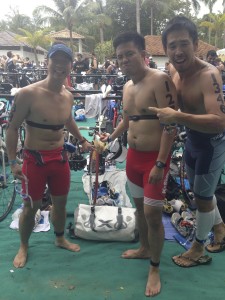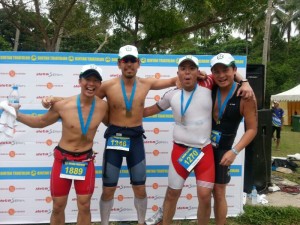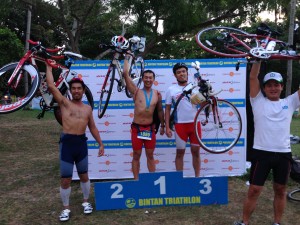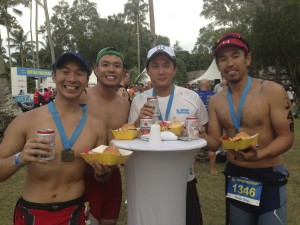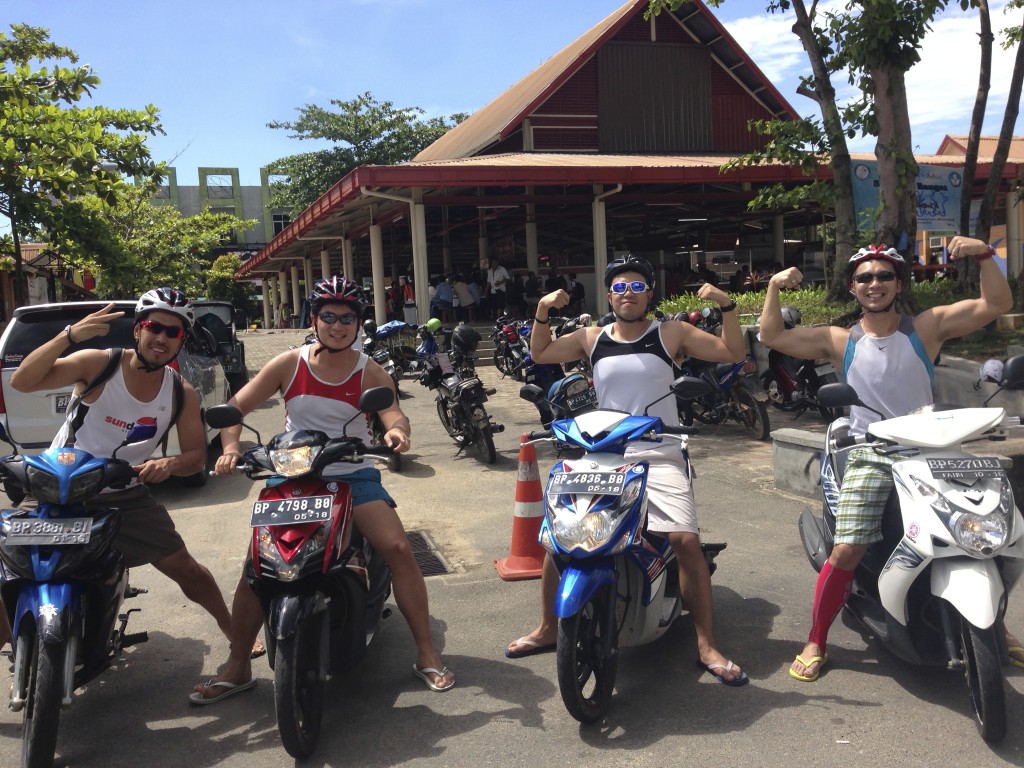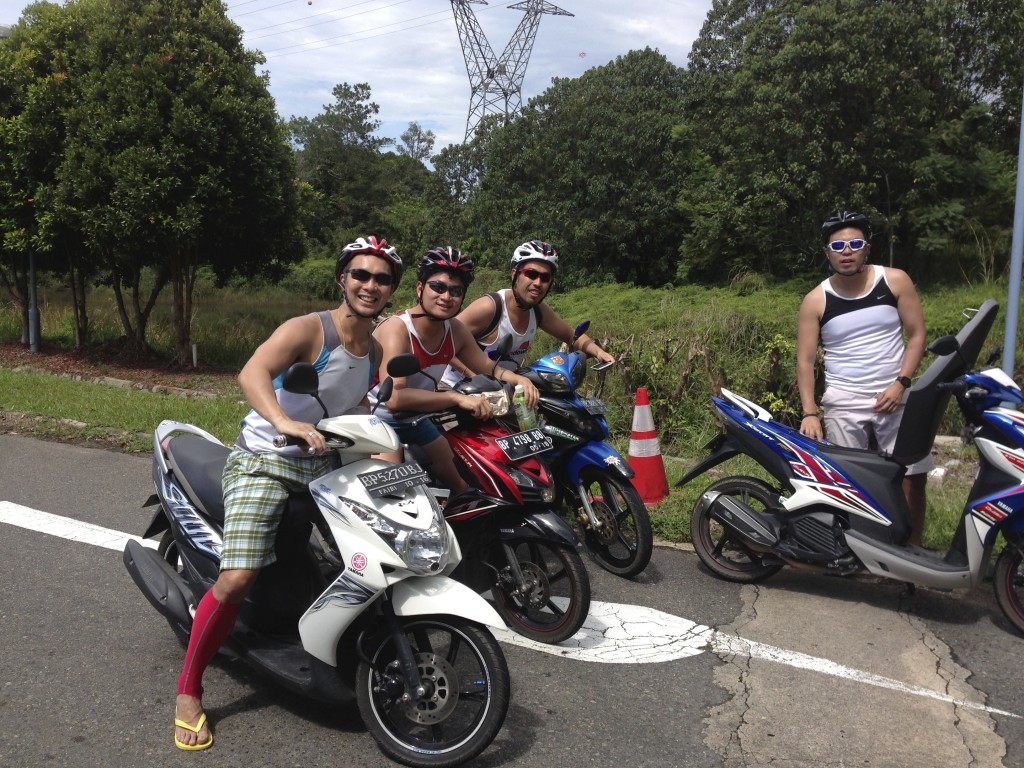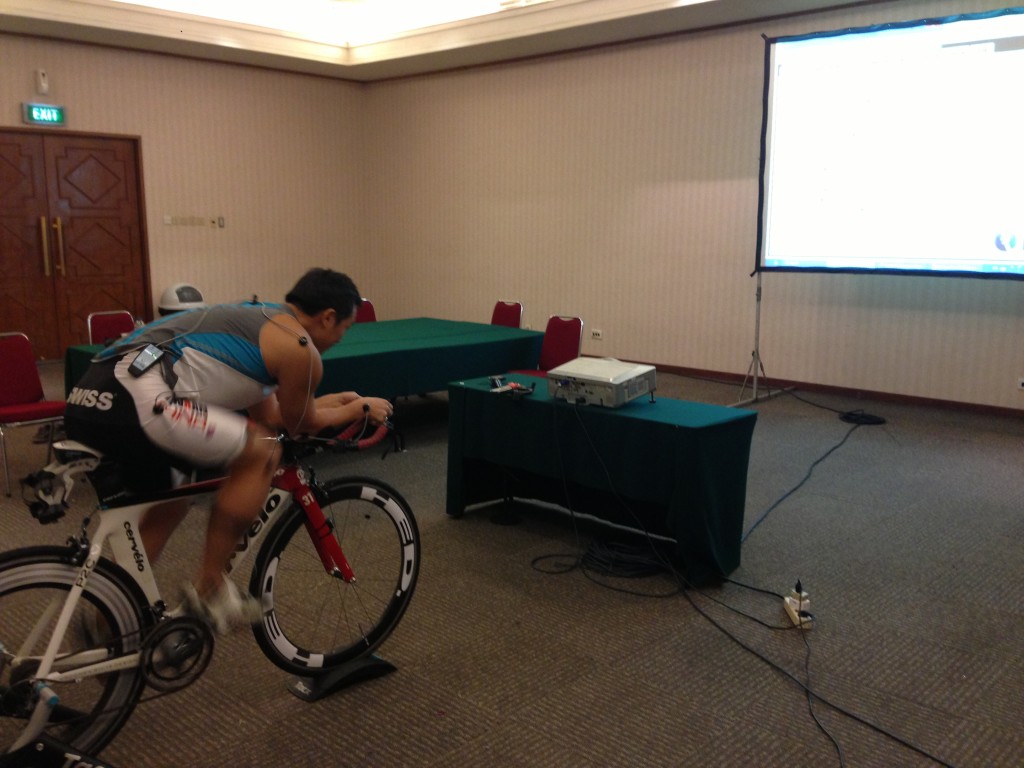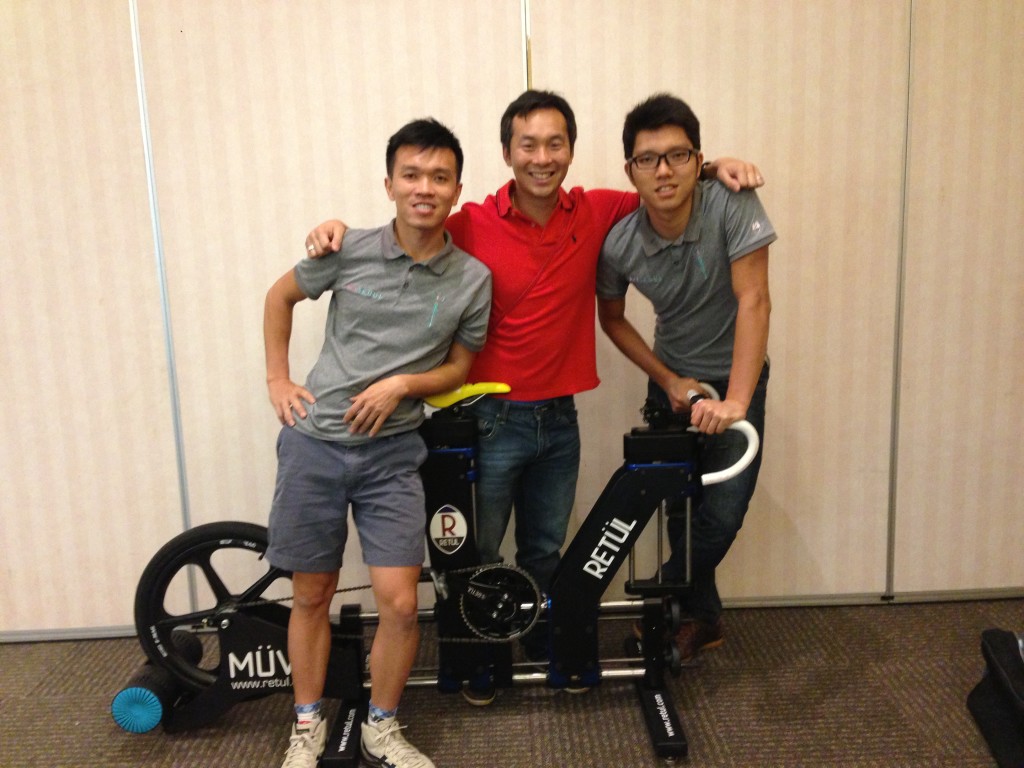- Race Day!
Morning and checking in:
Bintan is an unusual race in that it starts in the afternoon at 1:45PM. This was the first race i’ve done which doesn’t have a early morning start so the early dinner preparations and bathroom strategy was not as important. That said, we were all slightly confused as to what and how much to eat for breakfast/ lunch for the day of the race. I ended up eating half of a leftover sandwich and a couple of bananas for a late breakfast/ brunch. Weather conditions for the race were near perfect. We had an overcast day which blocked most of the sun but it was still warm enough to dry up the rain that had fallen earlier in the morning. So we headed to the transition area at around 10:30AM to set up. Transition area was quite spacious – in total there were supposed to be 600 competitors but apparently only around 500 competitors turned up for the race which is always comforting to know with the mass swim start. During the transition we practiced the the T1 exit. After picking up the bicycle from T1, competitors face a steep uphill climb of around 100 meters to get out of the resort area. In fact, you mount on a slight incline so you have to make sure that your bike is already in a low gear. Speaking to past participants we heard that spectators often gathered at the exit of T1 because cyclists often fell over in this area when struggling up the hill – especially if they were not in the right gear! So practicing this segment was a priority on race day to avoid embarrassment!
Race Start: Swim: 1.5K – 28+mins
In my past triathlons I had always started on the outside at the back of the swim. The swim start of a triathlon is a melee of arms and legs thrashing in the water. It’s the only part of the triathlon I always get nervous at and so before i’d always start at the back to try and get my own space. This time with the increasing “friendly” rivalry with my friends Tevis and Casey and newcomer to our trigroup Dave I decided I would try starting midpack to get more of a head start. The strategy paid off as I emerged first out of the group (although I did not know it at the time) but this definitely resulted in a tougher swim. Instead of having a clear lane when starting out at the back I was fighting my way with and through swimmers all around me for at the first 3/4 of the 1.5KM swim. Several times I swallowed sea water but fortunately my goggles did not come off. Later I learnt an important swim draft fact – that the best place to draft is off the the side of a swimmer by their waist – NOT right behind them as I had been doing and getting kicked in the face!
Bike: 40K – 1hr 11+mins
Coming out of the swim I knew I was in the top 1/3 from looking back out on the people still out on the swim course – this boosted my confidence and a friend standing by the T1 entrance, Eng Kim , told me I had a sub 30min swim time confirmed this. So running through T1 I quickly slipped on my shoes (no socks), helmet, glasses and wheeled my bike onto the course. I quickly settled into the bike and aimed to keep my avg. speed around 32-33KM/H. Since my bike refitting I was a lot more comfortable in aero position and this was perfect for the rolling course. I didn’t see any of my competition during the entire cycle and was beginning to think may be I had the lead. But turning my focus on my own race and knowing that hydration was key to a being able to maintain my pace during the run; I ensured I kept drinking during the bike every 10 minutes. In all I estimated an intake of around 2.5 litres of Accelerade during the bike.
Run: 10K – 50+mins
The run course follows a path around the resort with short hill climbs, forest runs and beachside paths. There were a number of turn arounds that let’s you see the pack of competitors up to 100m behind you. In all it is a two lap course ending at the transition area so plenty of spectators to cheer you on. My legs felt okay coming out of the bike and I immediately went into a 12KM/H pace for the run. However watching my HR creep to 180 (it had been around 175 for the bike) I wondered if I could keep it up. At the same time checking my watch I saw total elapsed time of 1hr 41′ out of T2 and although I fancied a shot at a sub 2:30 time; I was already on course for a PB (previous PB was 2:48) by a wide margin which I would be happy with. Then my inspiration came – during the first turnaround I saw Tevis coming up behind me looking strong. He’d clearly done a lot of work on his running with his “Macca sets” and was less than 10 seconds behind. I resolved to run faster and tried to increase the distance between us. Each lap there were 2 turn arounds and each one I estimated that I had may be gained a second or so. As we came out of the second turnaround on the second lap and with 2KM left I felt that I probably had him as I could no longer see him. I was wrong. in the last kilometer I decided I would do a quick check and there I saw him – he’d massively increased his pace and had strategically saved up to sprint the last 400m! By then it was too late at around 200m to go he flew past me to finish just 5 secs ahead.
Super fun race, beautiful course, well organized (great marshalls!) will be back again next year!
All in all it was a great race – made even better when we found out later in the race results that Tevis had received a 2 min. draft penalty bringing me back on top! Both Casey and Dave finished sub 3 which was remarkable given it was Dave’s first ever triathlon. Casey – clearly resting on the laurels of his Phuket victory has work to do for Cebu! (or significant upgrades to his bike!).
